
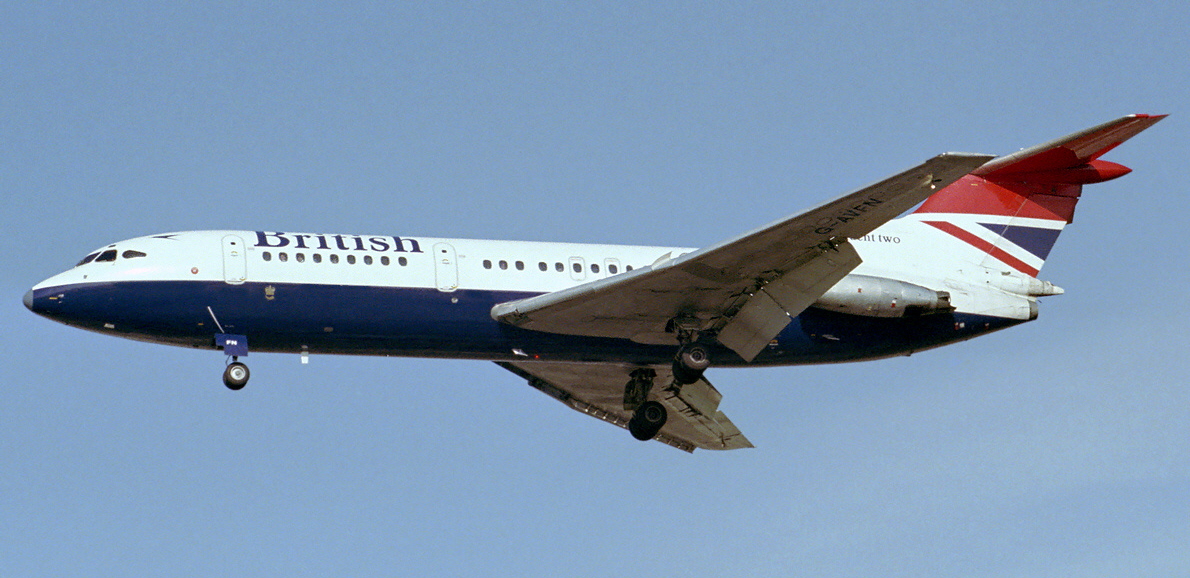 The Hawker Siddeley HS 121 Trident (affectionately called the “Ground Gripper” in British Airways service ) was a short to medium-range three-engined jet airliner designed by de Havilland and built by Hawker Siddeley in the 1960s and 1970s. The
The Hawker Siddeley HS 121 Trident (affectionately called the “Ground Gripper” in British Airways service ) was a short to medium-range three-engined jet airliner designed by de Havilland and built by Hawker Siddeley in the 1960s and 1970s. The
Trident is notable for its pioneering avionics which enabled it to become the first airliner to make a fully automatic approach and landing in revenue service in 1965 and to be the sole airliner capable of automatic landings in regular service from 1966 until versions of the Lockheed TriStar were also cleared to perform them in the mid 1970s.
Designed very tightly around a British European Airways (BEA) specification, the Trident had modest sales, with only ever 117 produced. The Trident was a jet airliner of all-metal construction with a T-tail and a low-mounted wing. It had three rear-mounted engines: two in side-fuselage pods, and the third in the fuselage tail cone, taking air in through an S - shaped duct. All versions were powered by versions of the Rolls-Royce Spey engine. The Trident was one of the fastest subsonic commercial airliners, regularly cruising at over 610 mph. At introduction into service its standard cruise Mach Number was 0.88, probably the highest of any of its contemporaries. Designed for high speed, the wing produced relatively limited lift at lower speeds. This, and the aircraft's low power-to-weight ratio, called for prolonged takeoff runs - hence the nickname “The Ground Gripper”. 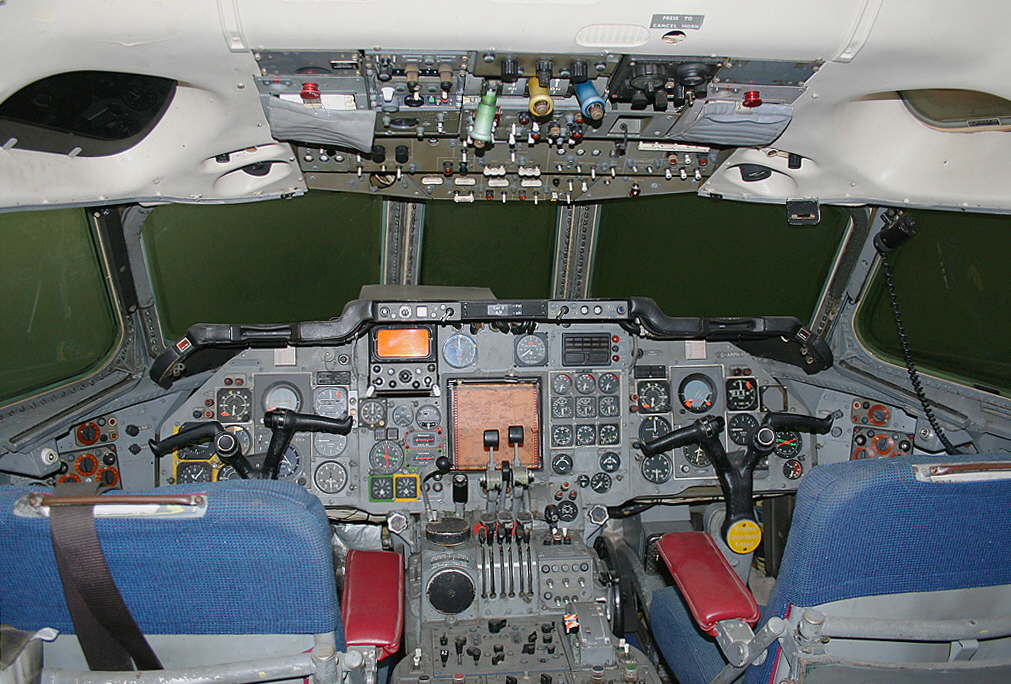
The Trident was routinely able to descend at rates of up to 4500 feet per minute in regular service. In emergency descents it was permissible to use reverse thrust of up to 10,000 rpm. The Trident's first version, the Trident 1C, had the unusual capability of using reverse thrust prior to touchdown. The throttles could be closed in the flare and reverse idle set to open the reverser buckets. At pilot discretion, up to full reverse thrust could then be used prior to touchdown. This was helpful to reduce hydroplaning and give a very short landing run on wet or slippery runways, while preserving wheel brake efficiency and keeping wheel brake temperatures low. In total, 117 Tridents were produced, while the Boeing 727, the Trident’s main competitor and built to the original airline specification for the Trident, sold 1,832 aircraft. The largest operator of the type was BEA. BEA's successor, British Airways retired their Trident fleet in the mid-1980s. In Asia, the Trident remained active in passenger service with Air China until the 1990s. As of 2014 it is believed that there are now no airworthy examples of this aircraft anywhere in the world.
Tim Orchard started his career with British Airways flying the Trident, but he has almost recovered now
 The McDonnell Douglas DC-10-30 is a three-engine widebody jet airliner manufactured between 1971 and 1989. The DC-10 has sufficient range for medium to long-haul flights, capable of carrying a maximum 380 passengers. Its most distinguishing feature is the two turbofan engines mounted on underwing pylons and a third engine at the base of the fin. The model was a successor to the McDonnell Douglas DC-8 for long-range operations, and competed in the same markets as the Lockheed L-1011 Tristar, which has a similar layout to the DC-10.
The McDonnell Douglas DC-10-30 is a three-engine widebody jet airliner manufactured between 1971 and 1989. The DC-10 has sufficient range for medium to long-haul flights, capable of carrying a maximum 380 passengers. Its most distinguishing feature is the two turbofan engines mounted on underwing pylons and a third engine at the base of the fin. The model was a successor to the McDonnell Douglas DC-8 for long-range operations, and competed in the same markets as the Lockheed L-1011 Tristar, which has a similar layout to the DC-10.
The series 30 was the longer range "international" version of the original medium range DC-10-10. One of the main visible differences between the models is that the series 10 has three sets of landing gear (one front and two main) while the series 30 has four sets of landing gear (one front, one in each wing and one in the centre fuselage). The centre main two - wheel landing gear (which extends from the centre of the fuselage) was added to accommodate the extra weight of the -30 variant by distributing the weight and providing additional braking. The series 30 had an absolute maximum range of 6,220 miles, which came down to a maximum range with a full payload of 4,604 miles. 
Eventually, the DC-10 became the best known and most popular of the three-engined airliners. They eventually built 446 of these aircraft in their different variants with the last and final DC-10 being rolled off the production line in December 1988 destined for Nigeria Airways in July 1989. Biman Bangladesh Airlines was the last commercial carrier to operate the DC-10 in passenger service and their last regularly scheduled DC-10 passenger flight was on December 7, 2013. The airline flew the DC-10 on a charter passenger flight on February 20, 2014, from Dhaka, Bangladesh to Birmingham, UK. Local charter flights were also flown until February 24, 2014. As of July 2013, there were 69 DC-10s and MD-10s in airline service as dedicated freighter aircraft with operators FedEx Express (62 aircraft), Kelowna Flightcraft Air Charter (4 aircraft), and 3 freight aircraft with smaller airlines.
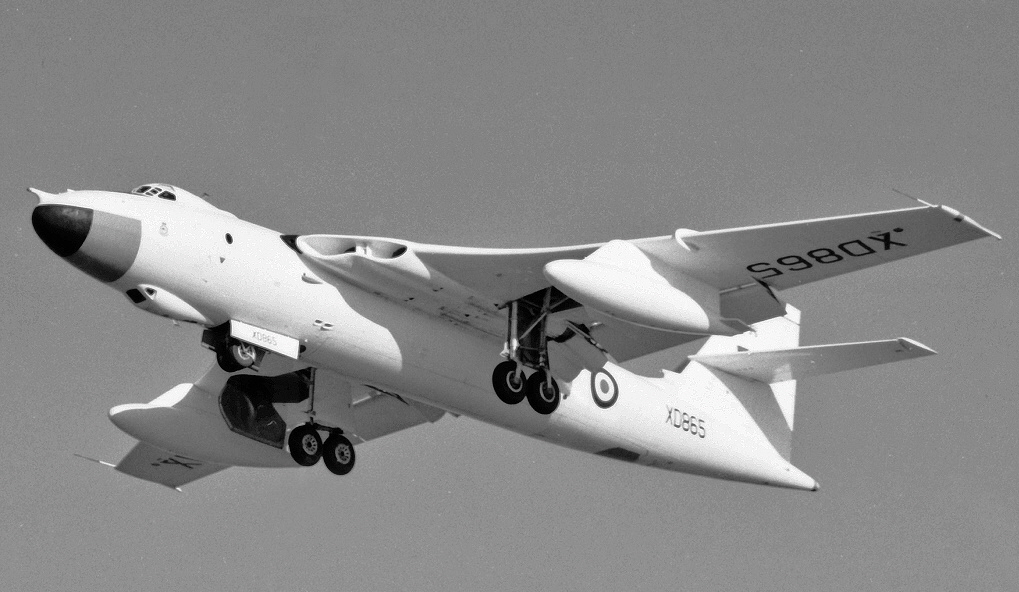 The Vickers - Armstrongs Valiant was a four-jet bomber, once part of the Royal Air Force's V bomber nuclear force in the 1950s and 1960s. Since the Valiant was part of an entirely new class of bombers for the RAF, 232 Operational Conversion Unit was established at RAF Gaydon in 1955. The Valiant aircraft were originally assigned to the strategic nuclear bombing role, as were the Vulcan and Victor B1s when they became operational. The first operational RAF unit to be equipped with the Valiant was 138 Squadron, located first at RAF Gaydon, later at RAF Wittering. At its peak, the Valiant equipped nine RAF squadrons.
The Vickers - Armstrongs Valiant was a four-jet bomber, once part of the Royal Air Force's V bomber nuclear force in the 1950s and 1960s. Since the Valiant was part of an entirely new class of bombers for the RAF, 232 Operational Conversion Unit was established at RAF Gaydon in 1955. The Valiant aircraft were originally assigned to the strategic nuclear bombing role, as were the Vulcan and Victor B1s when they became operational. The first operational RAF unit to be equipped with the Valiant was 138 Squadron, located first at RAF Gaydon, later at RAF Wittering. At its peak, the Valiant equipped nine RAF squadrons.
A Valiant B1 (WZ366) of No 49 Squadron was the first RAF aircraft to drop a British operational atomic bomb when it performed a test drop of a down-rated Blue Danube weapon on Maralinga, South Australia, on 11 October 1956.
On 15 May 1957, a 49 Squadron Valiant B(K).1 dropped the first British hydrogen bomb, the "Short Granite" (AKA "Green Granite Small"), over the Pacific as part of Operation Grapple. The test was largely a failure, as the measured yield was less than a third of the maximum expected and while achieving the desired thermonuclear explosion the device had failed to operate as intended. The first British hydrogen bomb that detonated as planned, "Grapple X Round A" (AKA "Round C1"), was dropped on 8 November 1957. The Grapple series of tests continued into 1958, and in April 1958 the "Grapple Y" bomb exploded with 10 times the yield of the original "Short Granite". Testing was finally terminated in November 1958, when the British government decided it would perform no more air-delivered nuclear tests.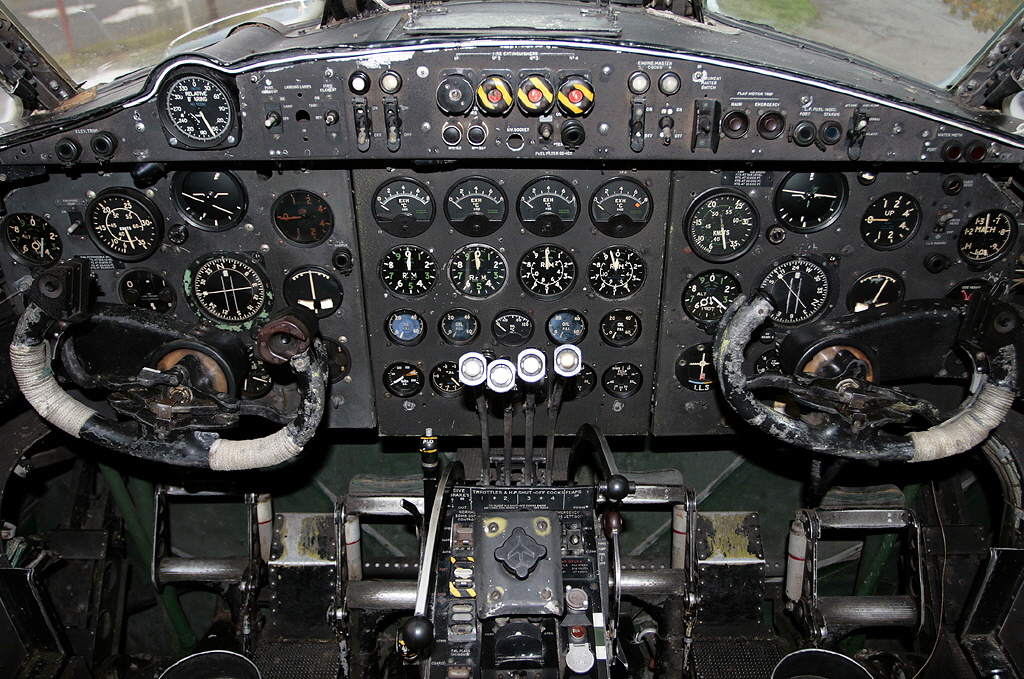
Peacetime practice involved the dropping of small practice bombs on instrumented bombing ranges, also a system of predicted bombing using radio tones to mark the position of bomb drop over non-range targets, the bomb error being calculated by a ground radar unit and passed either to the crew during flight or to a headquarters for analysis. When the Navigational and Bombing System (NBS) was fitted and crews well-trained, bombing accuracies became typical of other aircraft of the time and from high level (say, 40,000 ft), a 100 yd error was not uncommon.
The Valiant was the first of the V-bombers to see combat, during the Anglo-French-Israeli Suez intervention in October and November 1956. During Operation Musketeer, Valiant aircraft operating from the airfield at Luqa on Malta dropped conventional High Explosive bombs on targets inside Egypt. Although the Egyptians did not oppose the attacks and there were no Valiant combat losses, the results of the raids were disappointing. Their primary targets were seven Egyptian airfields. Although the Valiants dropped a total of 842 tons of bombs, only three of the seven airfields were seriously damaged. It was the last time any of the V-bombers flew a war mission until the Avro Vulcans bombed Port Stanley airfield in the Falkland Islands during the Falklands War in 1982.
The Valiant was originally developed for use as high-level strategic bomber, but its role, like other V bombers, was changed to low-level attacks. Low-level flying brought a number of serious problems as the Valiant aircraft’s wing spar attachment castings showed premature fatiguing and corrosion traced to the use of an inappropriate type of aluminium alloy. The Valiant had been the first of the V bombers to become operational, and its role was already shifting to that of a tanker. Rather than repair or rebuild the fleet, the Valiant was grounded and the Handley Page Victor took over the tanker role.
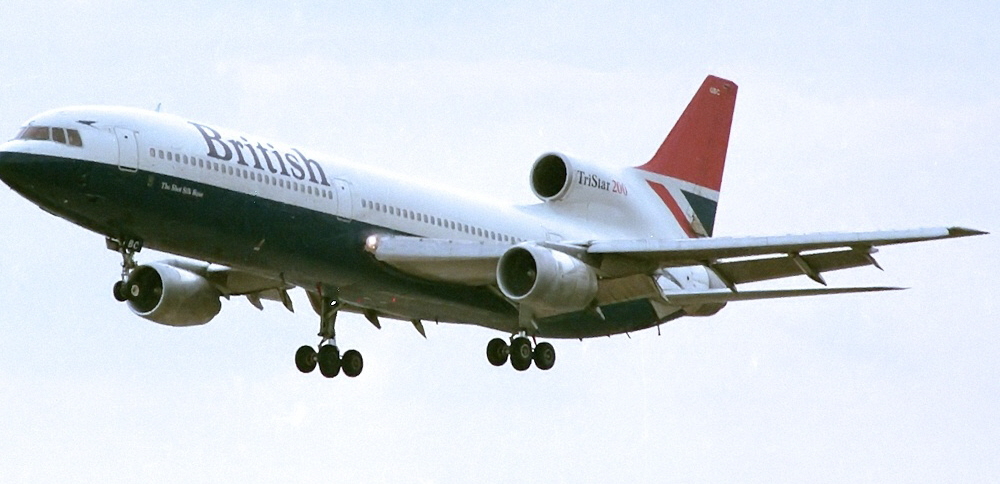 The Lockheed L-1011 TriStar, commonly referred to as the L-1011 (pronounced "L-ten-eleven") or TriStar, is a medium-to-long-range, wide-body trijet airliner. It was the third widebody airliner to enter commercial operations, after the Boeing 747 and the McDonnell Douglas DC-10. The aircraft has a seating capacity of up to 400 passengers and a range of over 4,000 nautical miles (7,410 km). Its trijet configuration places one Rolls-Royce RB211 engine under each wing, with a third, centre - mounted RB211 engine with an S-duct air inlet embedded in the tail and the upper fuselage. The main visible difference between the TriStar and its similar trijet competitor, the McDonnell Douglas DC-10, is the middle / tail engine: the DC-10's engine is mounted above the fuselage for simplicity of design and more economical construction, while the TriStar's No 2 engine is mounted to the rear fuselage and fed through an S-duct (similar to the Boeing 727) for reduced drag, improved stability, and easier replacement. The aircraft has a sophisticated autoland capability, an automated descent control system, and also available, dependant upon airline specifications, a lower deck galley and lounge facilities.
The Lockheed L-1011 TriStar, commonly referred to as the L-1011 (pronounced "L-ten-eleven") or TriStar, is a medium-to-long-range, wide-body trijet airliner. It was the third widebody airliner to enter commercial operations, after the Boeing 747 and the McDonnell Douglas DC-10. The aircraft has a seating capacity of up to 400 passengers and a range of over 4,000 nautical miles (7,410 km). Its trijet configuration places one Rolls-Royce RB211 engine under each wing, with a third, centre - mounted RB211 engine with an S-duct air inlet embedded in the tail and the upper fuselage. The main visible difference between the TriStar and its similar trijet competitor, the McDonnell Douglas DC-10, is the middle / tail engine: the DC-10's engine is mounted above the fuselage for simplicity of design and more economical construction, while the TriStar's No 2 engine is mounted to the rear fuselage and fed through an S-duct (similar to the Boeing 727) for reduced drag, improved stability, and easier replacement. The aircraft has a sophisticated autoland capability, an automated descent control system, and also available, dependant upon airline specifications, a lower deck galley and lounge facilities.
The L-1011 TriStar was produced in two fuselage lengths. The original L-1011-1 first flew in November 1970, and entered service with Eastern Air Lines in 1972. The shortened, long-range L-1011-500 first flew in 1978, and entered service with British Airways a year later. The original length TriStar was also produced as the high gross weight L-1011-100, uprated engine L-1011-200, and further upgraded L-1011-250. Post-production conversions for the L-1011-1 with increased takeoff weights included the L-1011-50 and L-1011-150.
Between 1968 and 1984, Lockheed manufactured a total of 250 TriStars, compared to 446 DC-10s, partly because of the TriStar's delayed introduction but particularly because a larger version with a longer range was not initially offered. The aircraft's sales were hampered by two years of delays due to developmental and financial problems at Rolls-Royce, the sole manufacturer of the TriStar's engines. Under state control, costs at Rolls-Royce were tightly controlled. The company's efforts largely went into the original TriStar engines, which needed considerable modifications between the L-1011's first flight and service entry. The competition, notably General Electric, were very quick to develop their CF6 engine with more thrust, which meant that a heavier "intercontinental" DC-10-30 could be more quickly brought to market. The flexibility afforded to potential customers by a long-range DC-10 put the L-1011 at a serious disadvantage. Rolls-Royce went on to develop the high-thrust RB211-524 for the L-1011-200 and -500, but this took many years. After production ended, Lockheed withdrew from the commercial aircraft business due to its below-target sales. As of 2014 there were only 17 Tristar aircraft operational in the world.
The Percival P56 Provost was a British ab initio trainer for the Royal Air Force in the 1950s, replacing the Percival Prentice. The Provost was a two-seat, side-by-side low-wing monoplane with fixed landing gear of the tailwheel variety, powered by a 550hp Alvis Leonides 126 radial engine. After a lengthy service career, the design was adapted for a turbojet.
In 1953, the first production P56s joined the Central Flying School's Basic Training Squadron at South Cerney as the RAF's standard basic trainer, called the Provost T Mk 1. It had more than twice the power of its predecessor, the Prentice, with higher performance and manoeuvrability. More than 330 of the aircraft were eventually delivered to the RAF over a period of 3 years, during which time (1954) Percival became part of the Hunting Group. The Provost remained in service until the early 1960’s when they were replaced by a major revision of the design that evolved the P56 Provost into the Jet Provost trainer, which eventually evolved into the BAC Strikemaster multi-role trainer and light attack aircraft in 1967. A few Provosts continued in service until the last example was retired in 1969. Several retired airframes were renumbered with maintenance serials and used for training of airframe and engine tradesmen. At least five Percival Provost have survived as civilian aircraft.
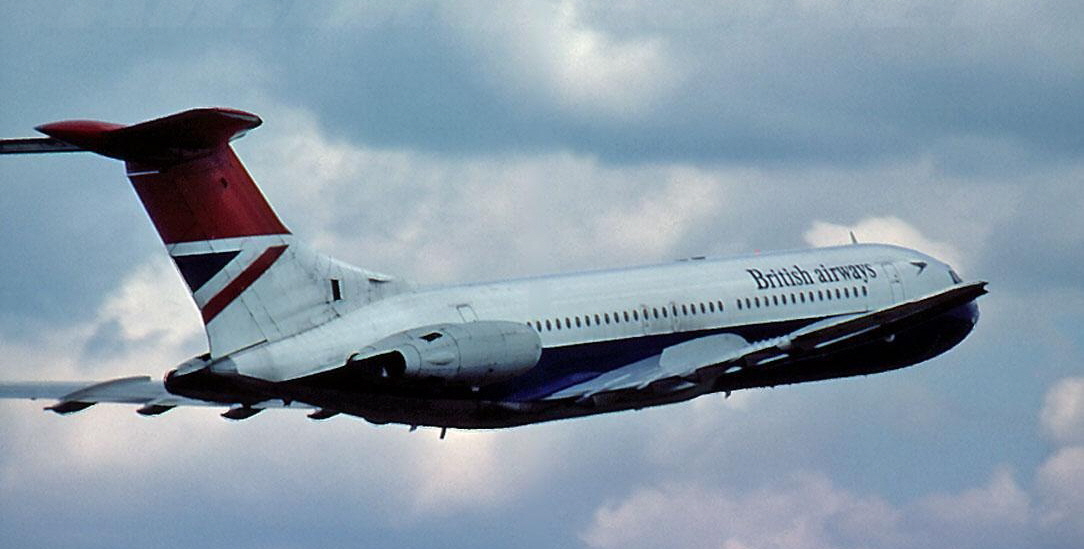 The Vickers VC10 was a long-range airliner designed and built by Vickers - Armstrong (Aircraft) Ltd, and first flown at Brooklands, Surrey, in 1962. The airliner was designed to operate on long-distance routes from the shorter runways of the era with a high subsonic speed, and demanded excellent hot and high performance for operations from African airports. The performance of the VC10 was such that it achieved the fastest London to New York crossing of the Atlantic by a jet airliner, a record still held to date for a sub-sonic airliner - only Concorde was faster. The VC10 is often compared to the larger Soviet Ilyushin Il-62, both aircraft having a rear-engined quad layout, the two types being the only airliners with such a configuration (a configuration that they shared with the earlier, but smaller Lockheed JetStar). Although only a relatively small number of VC10 aircraft were built (54), they provided long service with BOAC and other airlines from the 1960s to 1981. They were also used from 1965 as strategic air lifters for the Royal Air Force, and former passenger models and others were used as aerial refuelling aircraft. The 50th anniversary of the first flight of the prototype VC10 aircraft, G-ARTA, was celebrated with a 'VC10 Retrospective' Symposium and the official opening of a VC10 exhibition at Brooklands Museum on 29 June 2012. The type was finally retired from RAF service on 20 September 2013.
The Vickers VC10 was a long-range airliner designed and built by Vickers - Armstrong (Aircraft) Ltd, and first flown at Brooklands, Surrey, in 1962. The airliner was designed to operate on long-distance routes from the shorter runways of the era with a high subsonic speed, and demanded excellent hot and high performance for operations from African airports. The performance of the VC10 was such that it achieved the fastest London to New York crossing of the Atlantic by a jet airliner, a record still held to date for a sub-sonic airliner - only Concorde was faster. The VC10 is often compared to the larger Soviet Ilyushin Il-62, both aircraft having a rear-engined quad layout, the two types being the only airliners with such a configuration (a configuration that they shared with the earlier, but smaller Lockheed JetStar). Although only a relatively small number of VC10 aircraft were built (54), they provided long service with BOAC and other airlines from the 1960s to 1981. They were also used from 1965 as strategic air lifters for the Royal Air Force, and former passenger models and others were used as aerial refuelling aircraft. The 50th anniversary of the first flight of the prototype VC10 aircraft, G-ARTA, was celebrated with a 'VC10 Retrospective' Symposium and the official opening of a VC10 exhibition at Brooklands Museum on 29 June 2012. The type was finally retired from RAF service on 20 September 2013.
The VC10 was a new design but used some existing production ideas and techniques, as well as the Conway engines, developed for a previous Vickers design. It had a generous wing equipped with wide chord Fowler flaps and full span leading edge slats for good take-off and climb performance and its rear engines gave an efficient clean wing and reduced cabin noise. The engines were also higher up from the runway surface than an underwing design minimising damage from items like stones or debris on the runway - of importance considering the nature of the African runways. Technology included structural parts milled from solid blocks rather than assembled from sheet metal, which gave this aircraft immense strength. The following incident that occurred to a British Caledonian VC10 in June 1971 gives a good idea of the inherent strength of the design.
During a flight across the Andes from Buenos Aires, Argentina to Santiago in Chile, British Caledonian aircraft e G-ASIX got caught in a patch of clear air turbulence above the mountain peaks. The aircraft was thrown up on to its side at a 90-degree-plus back angle and then tossed, headlong, nose down towards the peaks a few thousand feet below (The mountains reaching up to 27.000 feet placed them close at hand) reaching speeds up to Mach 0.96 during the event. The severity of the upset caused the PCUs (power control units) on several flying control surfaces to be knocked out of action leaving the crew with an airplane plummeting downwards with speeds varying between the stall and high-speed buffet. With very little control authority the crew managed a recovery, resetting the other PCUs along the way. The airplane landed safely at its destination and after a thorough ground check was despatched on its next flight back home to Gatwick via Freetown. During the Freetown - Gatwick leg an unusual vibration was noticed in the airframe which increased in severity. On landing it became clear that a part of the leading edge of the stabiliser had detached and the leading edge spar of the fin was broken. Furthermore the wing torsion box turned out to be distorted with the wing tips bent upwards some four feet. The combined damage required a lengthy repair and only after several months in the hangar did G-ASIX fly again. The incident proved the strength of the VC10 airframe as other aircraft in previous similar situations had lost structural integrity and crashed. On an airliner with wing mounted engines the engine mounting pins would probably have snapped as the aircraft was spun around.
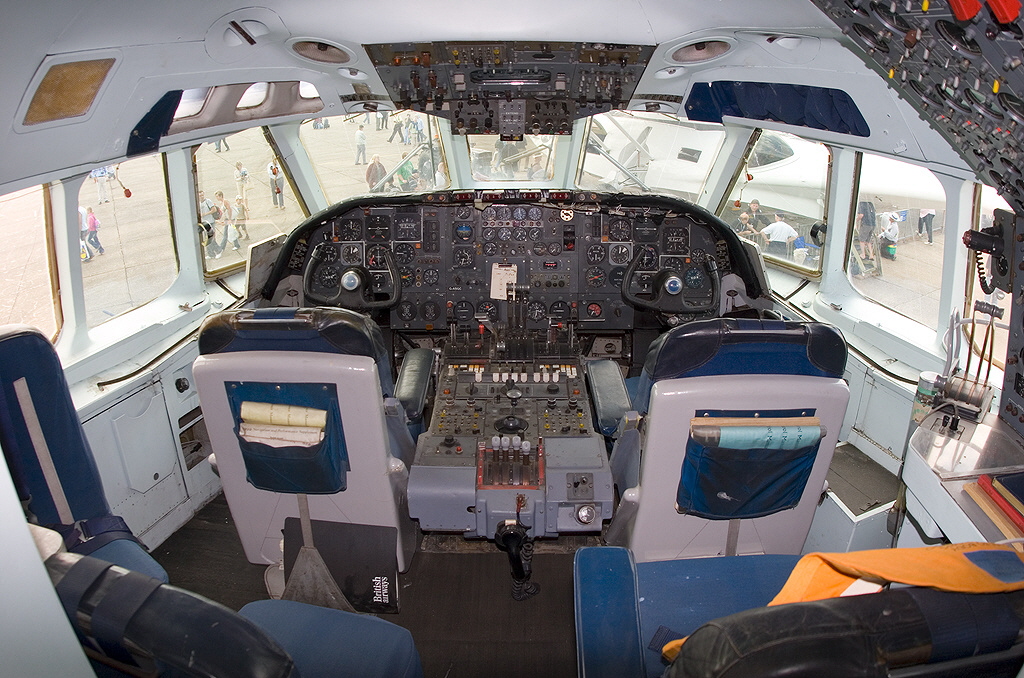
The Royal Air Force was the other major operator of this aircraft, initially using them world-wide as transport / passenger aircraft before converting them for an in-flight refuelling role role. Although the aircraft had been retired from commercial service many years before, the final flights of the VC10 in RAF service took place on 20 September 2013 when the final refuelling sortie was followed by a tour of the UK. On 24 September, RAF aircraft ZA150 had its last flight to Dunsfold Aerodrome for preservation at the Brooklands Museum, while aircraft ZA147 arrived at Bruntingthorpe on 25 September.
Page 2 of 2
